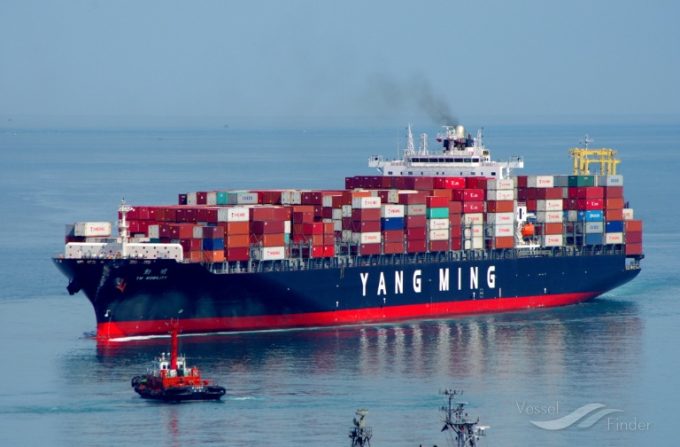OVP launches Nantong’s first deepsea service via the Red Sea
OVP Shipping, a China-based Russia-focused liner operator, has launched the first deepsea service from China’s ...
F: MAKING MONEY IN CHINAMAERSK: THE DAY AFTERDHL: NEW DEALGXO: NEW PARTNERSHIPKNIN: MATCHING PREVIOUS LOWSEXPD: VALUE AND LEGAL RISKMAERSK: DOWN SHE GOESVW: PAY CUTFDX: INSIDER BUYXOM: THE PAIN IS FELTUPS: CLOSING DEALSGXO: LOOKING FOR VALUE
F: MAKING MONEY IN CHINAMAERSK: THE DAY AFTERDHL: NEW DEALGXO: NEW PARTNERSHIPKNIN: MATCHING PREVIOUS LOWSEXPD: VALUE AND LEGAL RISKMAERSK: DOWN SHE GOESVW: PAY CUTFDX: INSIDER BUYXOM: THE PAIN IS FELTUPS: CLOSING DEALSGXO: LOOKING FOR VALUE

Container lines, already squeezed by schedule pressures due to the longer transits around the Cape of Good Hope, now have another challenge to deal with: tighter regulations in China for hazardous cargo.
The new rules, imposed by the China Maritime Safety Administration (MSA), apply to export/import/transhipment cargoes moving via Ningbo port, one of the busiest cargo gateways in China.
“In adherence to the latest instructions, with immediate effect it is mandatory to provide DGD (dangerous goods declaration) and MSDS (material safety data sheet) for all bookings destined/transit/transhipment/exports via Ningbo,” CMA CGM said in a customer advisory.
According to the mandate issued by MSA, carriers and other stakeholders must file all mandatory documents 72 hours prior to the closure of declared vessel cut-offs for cargo gate-in.
The French carrier also warned customers that non-compliant shipment cases run the risk of cargo being rolled over or delayed, so a seamless flow of information to China MSA is critical.
The tighter measure comes in the wake of heightened industry concerns over dangerous goods flow, after a major explosion occurred on the containership YM Mobility two months ago while in port at one of the terminals Ningbo.
According to previous updates, the 6,589-teu vessel was deployed on the AG2 service between the Far East and the Middle East Gulf, a string of THE Alliance involving Yang Ming, Cosco, Hapag-Lloyd, HMM and ONE.
There has been a series of onboard ship fires in recent months, for various reasons, prompting carriers and port authorities to pay greater attention to hazmat cargo declarations and carriage.
The Ningbo incident was followed by a fire which erupted on the MSC Capetown III at Sri Lanka’s Colombo port.
The Maersk Frankfurt, while sailing off the Indian coast, was the other recent onboard fire incident. The 2024-built vessel, on a time charter to Maersk, had to battle for weeks to be declared seaworthy, but the fate of cargo on board the vessel now hangs on shippers making the required security arrangements through the general average (GA) adjusters.
Following the Maersk Honam blaze in 2018 that killed five crew members, Maersk revised its rules regarding the stowage of cargo covered under the International Maritime Dangerous Goods (IMDG) Code.
Arguably, shippers’ incorrect declarations and/or improper packing of hazardous cargo – leaving carriers in the dark about the correct nature of cargo – have been the chief factor leading to increasing ship fire incidents.
You can contact the writer at [email protected].
Comment on this article